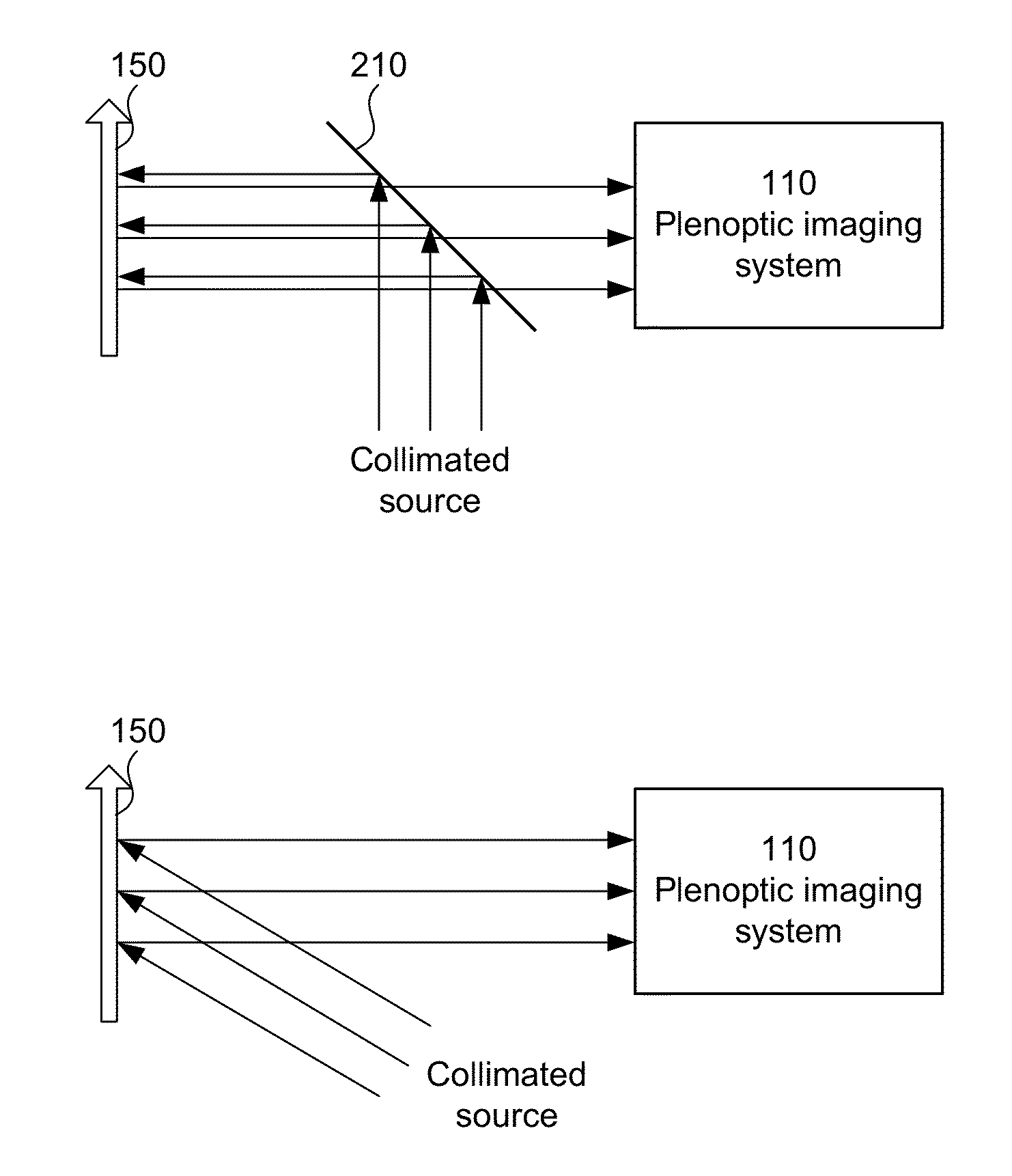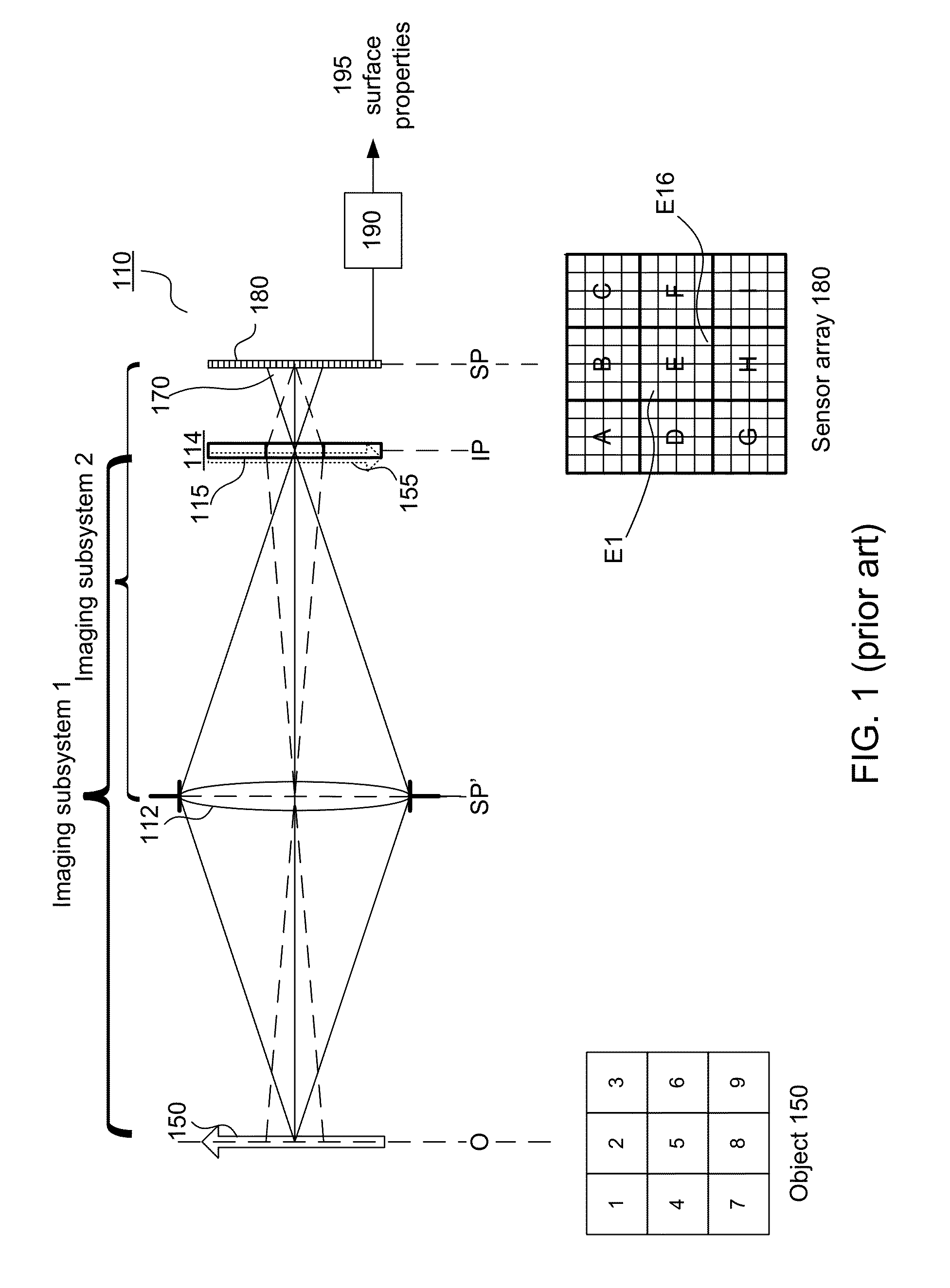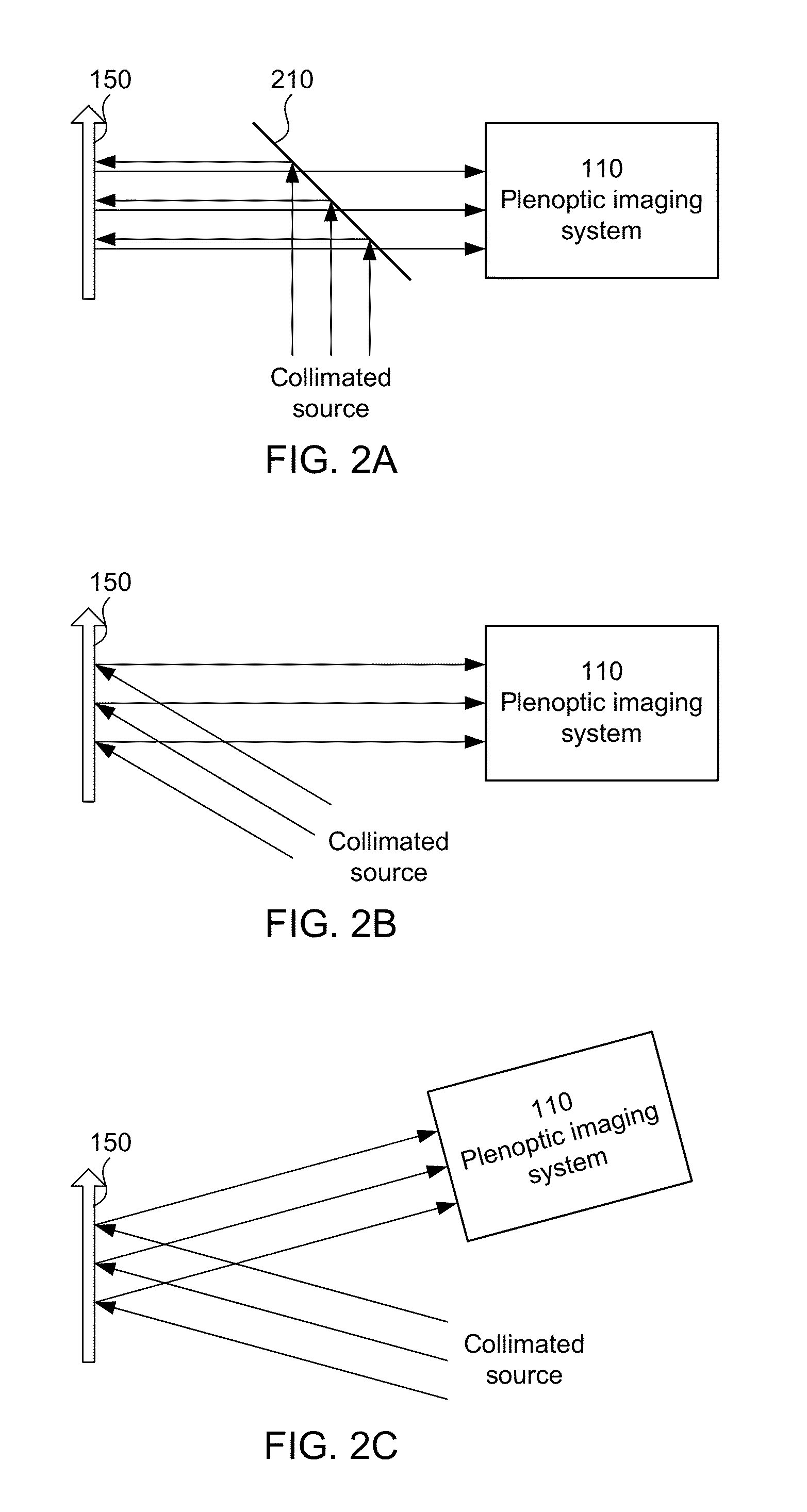Estimating Surface Properties Using a Plenoptic Camera
- Summary
- Abstract
- Description
- Claims
- Application Information
AI Technical Summary
Benefits of technology
Problems solved by technology
Method used
Image
Examples
Embodiment Construction
[0024]The figures and the following description relate to preferred embodiments by way of illustration only. It should be noted that from the following discussion, alternative embodiments of the structures and methods disclosed herein will be readily recognized as viable alternatives that may be employed without departing from the principles of what is claimed.
[0025]FIG. 1 (prior art) is a diagram illustrating an example of a plenoptic imaging system. The plenoptic imaging system 110 includes primary imaging optics 112 (represented by a single lens in FIG. 1), a secondary imaging array 114 (an array of image forming elements 115) and a sensor array 180. The secondary imaging array 114 may be referred to as a microimaging array. The secondary imaging array 114 and sensor array 180 together may be referred to as a plenoptic sensor module. These components form two overlapping imaging subsystems, shown as subsystem 1 and subsystem 2 in FIG. 1.
[0026]For convenience, the imaging optics 1...
PUM
 Login to View More
Login to View More Abstract
Description
Claims
Application Information
 Login to View More
Login to View More - R&D
- Intellectual Property
- Life Sciences
- Materials
- Tech Scout
- Unparalleled Data Quality
- Higher Quality Content
- 60% Fewer Hallucinations
Browse by: Latest US Patents, China's latest patents, Technical Efficacy Thesaurus, Application Domain, Technology Topic, Popular Technical Reports.
© 2025 PatSnap. All rights reserved.Legal|Privacy policy|Modern Slavery Act Transparency Statement|Sitemap|About US| Contact US: help@patsnap.com



